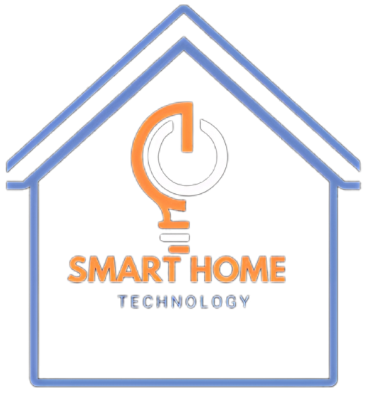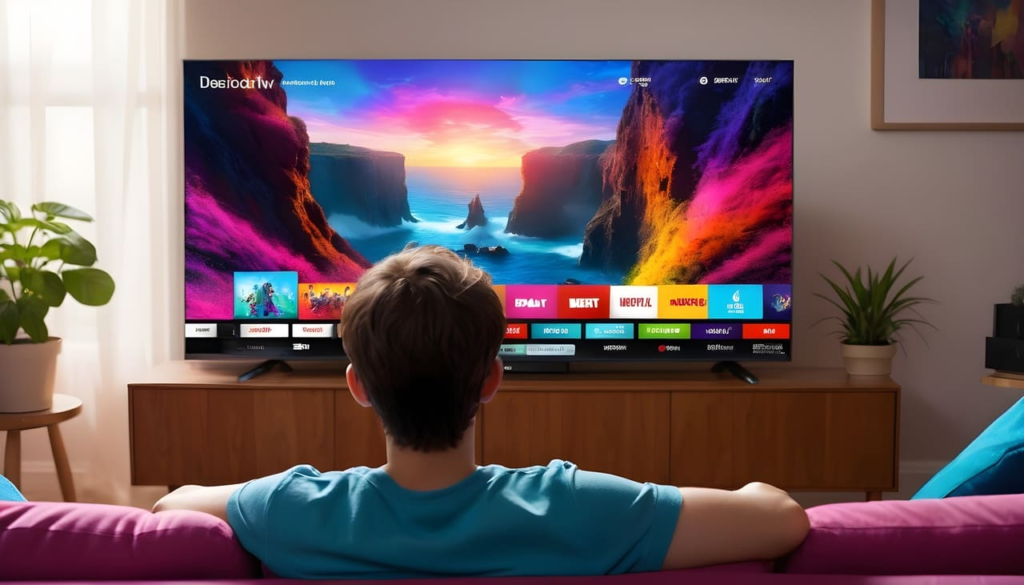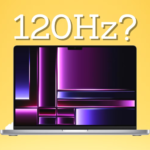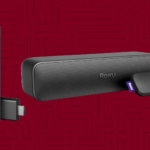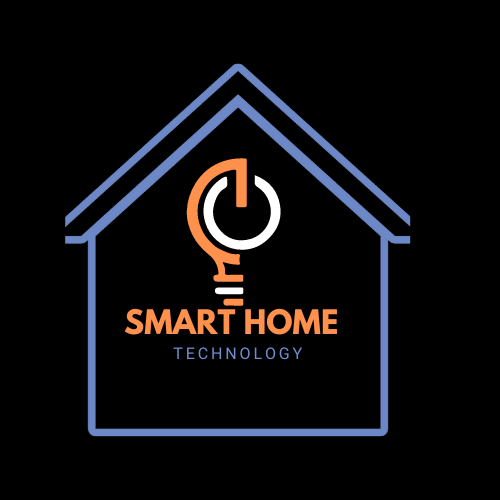A smart TV is a television with built-in internet connectivity that is pre-installed. At the same time, A streaming device (like Roku, Amazon Fire Stick, or Google Chromecast) connects to a regular TV via HDMI. It’s a cost-effective way to make a non-smart TV “smart.”

image credit:Andriod police
Table of Contents
Thanks to the quick development of home entertainment technology, people now have many options for accessing and enjoying their favorite content. Smart TVs and streaming devices are two well-liked choices in this field; each has unique features and capabilities to suit various tastes.
Making wise choices about improving your watching experience requires understanding the differences between these two categories of devices. In this post, we compare streaming devices and smart TVs, examining their main features, functionalities, prices, user experiences, content accessibility, connectivity choices, and factors to consider when choosing the best option for your entertainment requirements.
Definition of Streaming Devices
Streaming devices are compact gadgets that connect to your TV and enable you to stream online content from various services, such as Netflix, Hulu, and Disney+. Think of them as your passport to digital entertainment without needing a cable subscription. They’re like your tech-savvy best friend who always has the latest shows and movies queued up for you.
Definition of Smart TVs
Smart TVs are like the Swiss Army knives of the television world. They come with built-in internet connectivity and pre-installed apps, allowing you to stream content directly on the TV. It’s like having a TV and a computer rolled into one sleek package. Smart TVs are perfect for those who want a one-stop shop for all their entertainment needs.
Features and Capabilities of Streaming Devices
Streaming Services Supported
Streaming devices support a wide range of streaming services, giving you access to a diverse content library. From popular platforms like Netflix and Amazon Prime Video to niche services catering to specific interests, these devices ensure you never run out of things to watch.
Streaming Quality and Resolution
Streaming devices provide high-definition streaming, even supporting 4K resolution for a crystal-clear viewing experience. Say goodbye to grainy, pixelated images and hello to sharp, vibrant visuals that make you feel like you’re right in the middle of the action.
Additional Features (Voice Control, Screen Mirroring, etc.)
Many streaming devices have handy features like voice control, allowing you to search for content or adjust settings with just a few spoken words. Screen mirroring is another nifty feature that lets you project your phone or laptop screen onto the TV, turning your living room into a mini home theater.
Built-in Streaming Apps
Smart TVs come loaded with popular streaming apps like Netflix, Hulu, and YouTube right out of the box. There is no need to fumble with additional devices or cables—fire up your TV, select your app of choice, and start binge-watching to your heart’s content.
Smart Features (Voice Command, AI Integration, etc.)
Smart TVs often boast advanced features like voice command functionality and AI integration, making them even more intuitive and convenient. Want to change the channel or search for a specific show? Just ask your TV, and it’ll take care of the rest.
Display Technology (4K, HDR, etc.)
Smart TVs feature cutting-edge display technology, such as 4K resolution and High Dynamic Range (HDR) support, ensuring that every frame is rendered with stunning clarity and color accuracy. Prepare to immerse yourself in a visual feast that brings your favorite movies and shows to life.
Initial Purchase Cost
Unlike smart TVs, streaming devices are generally more budget-friendly in terms of initial purchase costs. If you’re looking for a cost-effective way to upgrade your viewing experience, a streaming device might be the way.
Subscription and Content Costs
Both streaming devices and smart TVs require subscriptions to access premium content, so factor in these ongoing costs when deciding. Consider your viewing habits and the services you’d like to access to determine which option offers the best value for your money.
Long-term Value for Money
When it comes to long-term value for money, smart TVs have the edge due to their all-in-one functionality and seamless integration of streaming services. While streaming devices offer flexibility and affordability, smart TVs provide a comprehensive entertainment solution that can adapt to your evolving needs over time. Choosing between a streaming device and a smart TV depends on your preferences, budget, and viewing habits.
Ease of Navigation
Streaming devices often offer a more streamlined and user-friendly experience than smart TVs in terms of ease of navigation. The interfaces on streaming devices are explicitly designed for content consumption, making it easier to find and access your favorite shows and movies.
Remote Control Options
Streaming devices usually have dedicated remote controls for easy navigation and quick access to features. Smart TVs, on the other hand, may have more complex remote controls with additional buttons and functions that can sometimes be overwhelming.
User Interface Customization
Streaming devices generally offer more customization options for the user interface, allowing you to personalize your viewing experience. Smart TVs may have limited customization features, which can be a drawback for those who like to tailor their device to their preferences.
Content Availability and App Selection

photo credit: Toms guide
Popular Streaming Apps Available
Both streaming devices and smart TVs offer access to popular streaming apps like Netflix, Hulu, and Amazon Prime Video. However, the availability of certain apps may vary between different devices and TV brands.
App Store Accessibility and Updates
Streaming devices typically have app stores that allow you to download and update apps easily. Smart TVs may also offer app stores, but the availability and frequency of updates can vary depending on the TV model.
Exclusive Content Deals
Some streaming devices may have exclusive content deals with certain streaming services or networks, giving users access to unique content that may not be available on smart TVs. This can be a deciding factor for some consumers when choosing between a streaming device and a smart TV.
Connectivity and Compatibility with Other Devices
Compatibility with Smart Home Devices
Streaming devices and smart TVs may have varying degrees of compatibility with smart home devices like Alexa or Google Home. It’s essential to consider how well your chosen device will integrate with your existing smart home setup.
Connectivity Options (Bluetooth, Wi-Fi, etc.)
Both streaming devices and smart TVs offer connectivity options such as Bluetooth and Wi-Fi for wireless connections to other devices. The ability to connect seamlessly to different devices can enhance your viewing experience.
Integration with External Devices (Gaming Consoles, Sound Systems, etc.)
If you plan to connect your streaming device or smart TV to external devices like gaming consoles or sound systems, it’s essential to check for compatibility and ease of integration. Some devices offer better connectivity options than others.
Considerations for Choosing Between Streaming Devices and Smart TVs
Use Case Scenarios
Consider how you plan to use your device. A streaming device may be better if you prioritize a seamless streaming experience with access to a wide range of apps. However, a smart TV could be the way to go if you prefer all-in-one convenience and integration.
Personal Preferences and Priorities
Your personal preferences, such as user interface preferences, app availability, and content deals, should be significant in your decision-making process. Choose the device that aligns best with your viewing habits and preferences.
Future-Proofing and Upgradability
When making your decision, consider the device’s future-proofing and upgradability. Streaming devices are often easier to upgrade and replace, while smart TVs may become outdated more quickly. Factor in how long you plan to keep the device and whether it will meet your needs in the long term.
Comparison Table: Smart TV vs. Streaming Device
| Feature | Smart TV | Streaming Device |
| Definition | TV with built-in apps for streaming. | External device enabling streaming on a regular TV. |
| Cost | Higher initial cost. | Lower cost starts around $30–$50. |
| Internet Dependency | Yes. | Yes. |
| Content Access | Built-in apps may have fewer updates. | Wide range of apps; frequently updated. |
| Setup | Simple, plug-and-play. | Requires HDMI port and internet connection. |
| Customization | Limited; tied to TV manufacturer. | High; supports multiple devices and apps. |
| Portability | Fixed to the TV. | Portable and easy to use on different TVs. |
| Examples | Samsung Smart TV, LG Smart TV. | Roku, Amazon Fire Stick, Google Chromecast. |
FAQ’s
What is the difference between a smart TV and a streaming device?
A smart TV has built-in internet connectivity and pre-installed apps like Netflix, YouTube, or Hulu, allowing you to stream content directly.
A streaming device (like Roku, Amazon Fire Stick, or Google Chromecast) connects to a regular TV via HDMI and enables streaming by accessing apps and content over the internet. It’s a cost-effective way to make a non-smart TV “smart.”
Is TV better than streaming?
- Traditional TV: Offers live broadcasts (news, sports) and specific cable channels. It doesn’t require internet but usually involves higher costs and fewer on-demand options.
- Streaming: Offers flexibility, on-demand viewing, and a wide range of content at a lower cost. However, it requires a reliable internet connection.
It depends on your preferences for cost, content, and internet access.
What does a streaming device do?
A streaming device allows you to:
- Access apps like Netflix, Hulu, Disney+, and YouTube.
- Play content (movies, shows, music) from the internet on your TV.
- Depending on the model, offer additional features like casting, voice control, or gaming options.
Can I stream TV without a smart TV?
Yes, you can stream TV on a regular TV by:
- Using a streaming device (Roku, Fire Stick, Chromecast, etc.).
- Connecting a computer or gaming console to your TV via HDMI.
- Using an internet-ready DVD or Blu-ray player with streaming apps.
Can I cast to my TV if it’s not a smart TV?
Yes, you can cast to a non-smart TV using:
- A Chromecast device or other casting-enabled streaming devices.
- Devices like Roku or Fire Stick that support casting.
- An HDMI cable connects your phone, tablet, or computer to the TV.
How does streaming work?
Streaming delivers media (audio/video) over the internet in real-time without requiring a full download.
- Content is sent in small packets and played as they arrive.
- You need a stable internet connection for seamless playback.
What are the disadvantages of streaming TV?
- Internet Dependency: Requires a strong, stable connection.
- Data Usage: This can consume a lot of data, especially with HD or 4K content.
- Subscription Costs: Multiple services can add up over time.
- Limited Live Content: May lack real-time broadcasts like news and sports.
- Technical Issues: Buffering or playback errors if the internet is slow.
Does streaming need internet?
Yes, streaming requires an internet connection to access and play content.
- Some services allow offline downloads, but you need the internet to download them initially.
What do you need when streaming?
- A device: Smart TV, streaming device, smartphone, tablet, or computer.
- Internet connection: Reliable and fast, ideally 10 Mbps or higher for HD streaming.
- Streaming service subscription: Netflix, Hulu, Disney+, or others.
- Cables (if needed): HDMI connects non-smart TVs to streaming devices.
- Optional: A remote, casting-enabled device, or voice assistant for navigation.
Final Thought
The choice between streaming devices and smart TVs ultimately boils down to individual preferences, budget considerations, and desired features. Whether you prioritize portability and versatility with a streaming device or a smart TV’s seamless integration and advanced technology, both options offer unique benefits for enhancing your entertainment experience. By weighing the factors discussed in this comparison, you can make an informed decision that aligns with your viewing habits and improves your enjoyment of streaming content.
Share Your Thoughts
Streaming technology has revolutionized how we consume media, offering unparalleled flexibility and access to content. Whether you prefer the convenience of a smart TV or the versatility of a streaming device depends on your needs, budget, and preferences.
What’s your experience?
- Do you prefer streaming on a smart TV or a streaming device?
- Have you faced challenges with internet speeds or compatibility?
- What features do you prioritize in your streaming setup—cost, quality, or functionality?
We’d love to hear your insights. Drop your thoughts in the comments, or share your preferred setup and tips for optimizing the streaming experience!
